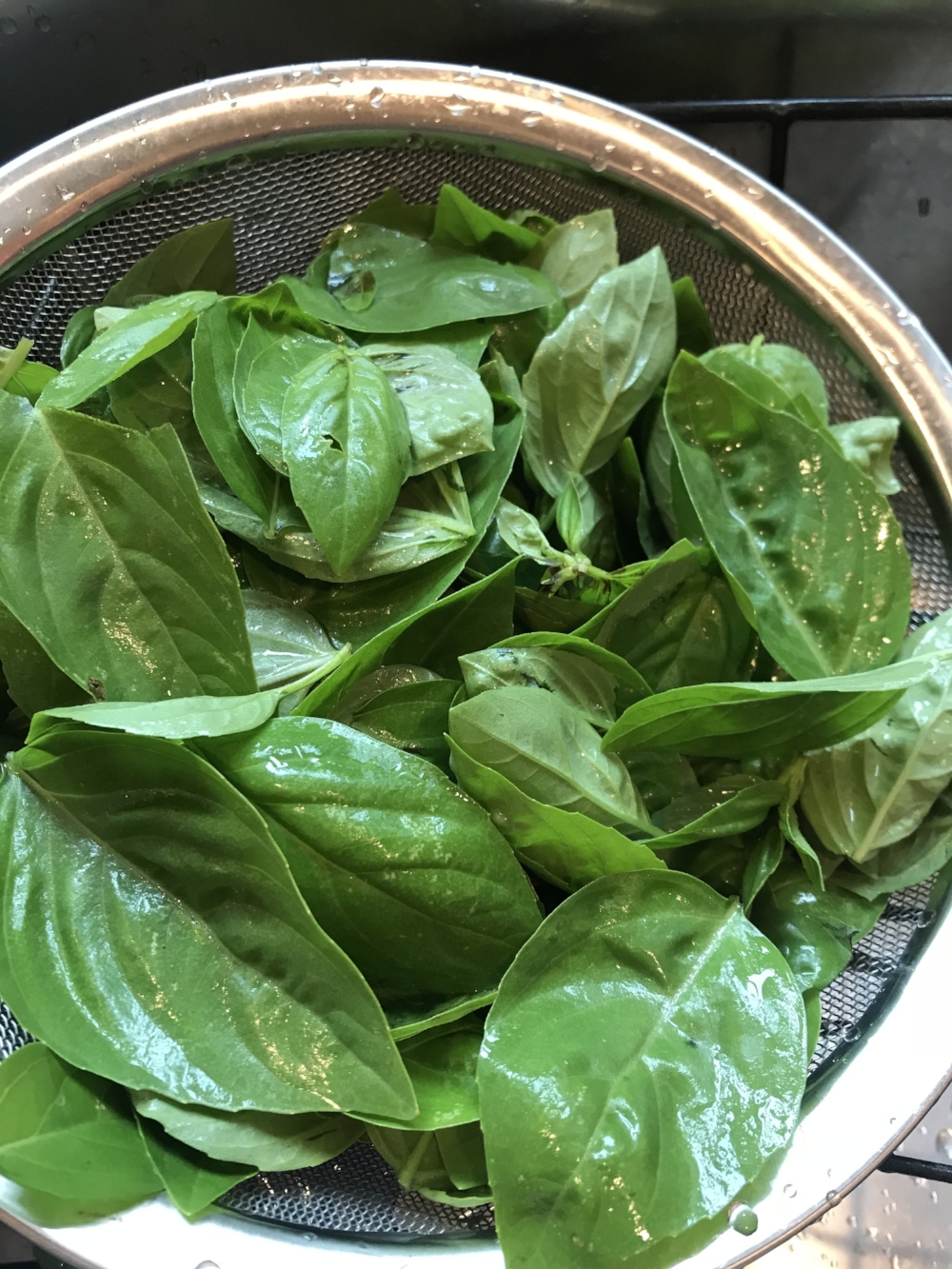What makes Pesto "Genovese"? First of all, Genovese means "from Genova", city in northwestern Italy, not far from the well-known Cinque Terre. The Genovese recipe calls for pine nuts along with fresh basil, olive oil, a little garlic and fresh pecorino or parmigiano cheese. Other versions of pesto replace pine nuts with walnuts, while others are quite heavy on garlic. The Genovese recipe imparts a delicate and sweet flavor to pasta dishes when used sparingly. In the U.S., pastas with pesto are heavily covered with the sauce, but in true northern Italian fashion, a teaspoonful is usually enough to dress and coat an individual plate of pasta.
What about its name - "Pesto"? In Italian, pestare means to step on or to pestle, reflecting the way the recipe is prepared, traditionally with mortar and pestle. The southern French have a similar recipe which is called Pistou.
Start with freshly picked basil leaves; rinse them and gently dry them on a clean towel. Prepare and measure the other ingredients, then use a mortal and pestle or a food processor to prepare the mixture (except the grated cheese which is added last to the ground mixture). Preparation only takes minutes. Pesto is served at room temperature, so you can prepare it just before serving it on hot boiled pasta. It is generous in oil, so there is no need to coat your pasta with anything else before dressing it with 1-2 teaspoons of your homemade pesto sauce. Right before eating, top off with the last bit of grated cheese.
Now, for my favorite recipe:
Ingredients:
3 cups loosely packed fresh basil leaves (gently washed and dried)
1/2 cup extra virgin olive oil
1/4 cup pine nuts
2 cloves garlic, peeled
Salt to taste
1/3 cup freshly grated parmigiano reggiano (or grana) cheese or pecorino romano
(right before serving: 2 additional Tbsps freshly grated parmigiano spinkled over dressed pasta)
Yield: a generous cup of fresh pesto sauce, enough for 6-8+ people
Best if served immediately, pesto can be prepared ahead of time, stored in a bowl with olive oil to cover the surface, and refrigerated; however, it can also be frozen. I boil small glass jars to sterilize them, spoon in the pesto, and place it in my freezer.
The next time you have at least a cup of fresh basil on hand, try this recipe and experience a delicate flavor quite different from that found commercially or at local restaurants.



